 |
  |
 |
published: September 20, "1990"
About A Band Of Gypsys
|

What's New & Previews
Jimi's Prediction —
A Remote View About Jimi Hendrix Timeline Blog Asteroid Impact Evolution Woodstock Blues Jimi Code VS. Da Vinci Code Credit Thefts Missile Agency/Moon Base Charade Remote View Mutation Seattleland Censorship Events Skewed Science Search Engine Rankings Download An Ad AT&T: New Nuremberg Wall(y)flower Syndrome Rochester Media DVD/CD Store More Links... 
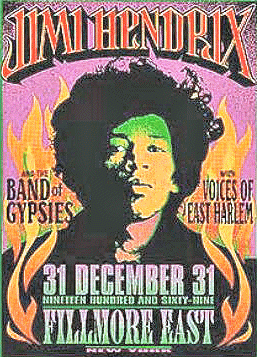 . [NOTE: The article below was the start of a project by the official Hendrix production company to produce a box set and movie about Jimi Hendrix's group called A Band Of Gypsys. Paul Allen's bogus lawsuit, aimed to stop Fairchild from becoming the director of the Hendrix production company, resulted in a horribly trashed version of this movie and CD to be released by the people who were given Michael's job. Worse, Paul Allen paid millions to entertain members of the Grammy Awards board of voters, and ensure that they voted to award a Grammy to the terrible documentary that was put out in place of Michael's movie about the Band of Gypsys. Mr. Allen's intent is to have all of Fairchild's insights about Hendrix removed from public view, and fund publicity and awards organizations to persuade us that far inferior portrayals of Jimi are preferable to Fairchild's insights. At the same time these same media outlets are prohibited from mentioning Michael at all. Mr. Allen has spent many millions to have Michael Fairchild blacklisted, and keep the vision of Jimi Hendrix hidden. This effort started in 1993, before anyone knew what the internet would become a few years later. When the co-founder of Microsoft set out to destroy Fairchild's career, he did so in complete belief that no one would ever learn of his savage attacks. - James Sedgwick]
. ABOUT A BAND OF GYPSYS
Published in Goldmine magazine on September 20, 1990, this article is taken from the booklet text I was hired to write for the Band of Gypsys CD. After my career was destroyed by Paul Allen in 1995, my booklet text below was suppressed by the people who now control/destroy the Hendrix legacy. - Michael Fairchild
. 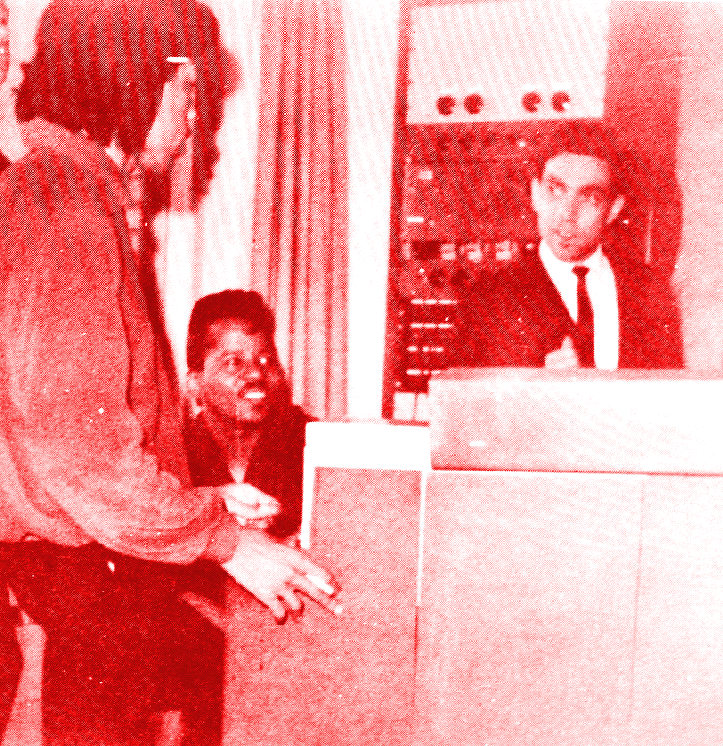 Hendrix, Knight & Chalpin On October 15, 1965, while "Jimmy" Hendrix was a sideman with Curtis Knight and the Squires, he signed an agreement with a New York record producer named Ed Chalpin. The agreement required Hendrix to record exclusively for Chalpin's PPX Enterprises for a period of three years. In exchange for his signature, Hendrix received one dollar in cash and the rights to one percent of the "retail selling price of all records sold for his production efforts, and minimum scale for arrangements he produces." A series of recordings was made for Chalpin and PPX before Hendrix left the Squires. Then, one year after he signed the now long-forgotten PPX agreement, Jimi Hendrix debuted his Experience in Evereux, France.
It wasn't long before the Experience's phenomenal success was noticed by Ed Chalpin, who then proceeded to market his old recordings of Hendrix with Curtis Knight. Hendrix's new record company initiated a lawsuit to halt the release of these records, but a New York court ruled that, however unfair, the 1965 agreement between Hendrix and Chalpin's PPX Enterprises was not illegal.
In June 1968 an out-of-court settlement was reached between the involved parties; Chalpin was given a two percent "override" on Hendrix's first three albums and complete rights to his fourth, with a guarantee of $200,000. In exchange for surrendering his 1965 agreement with Hendrix, Chalpin retained the right to market his recordings of Hendrix with Curtis Knight and the Squires.
Jimi's Electric Ladyland 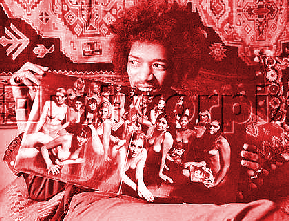 But by April the number of American combat deaths in Vietnam had surpassed the 33,629 killed during all of the Korean War. Secretary of Defense Melvin Laird announced his "Vietnamization" plan -- a process of slowly turning the fighting effort over to the South Vietnamese Army. As it became clear that the war would be prolonged for years more, lines separating hawks from doves were drawn clearly and draft age students rebelled on hundreds of American campuses that spring. 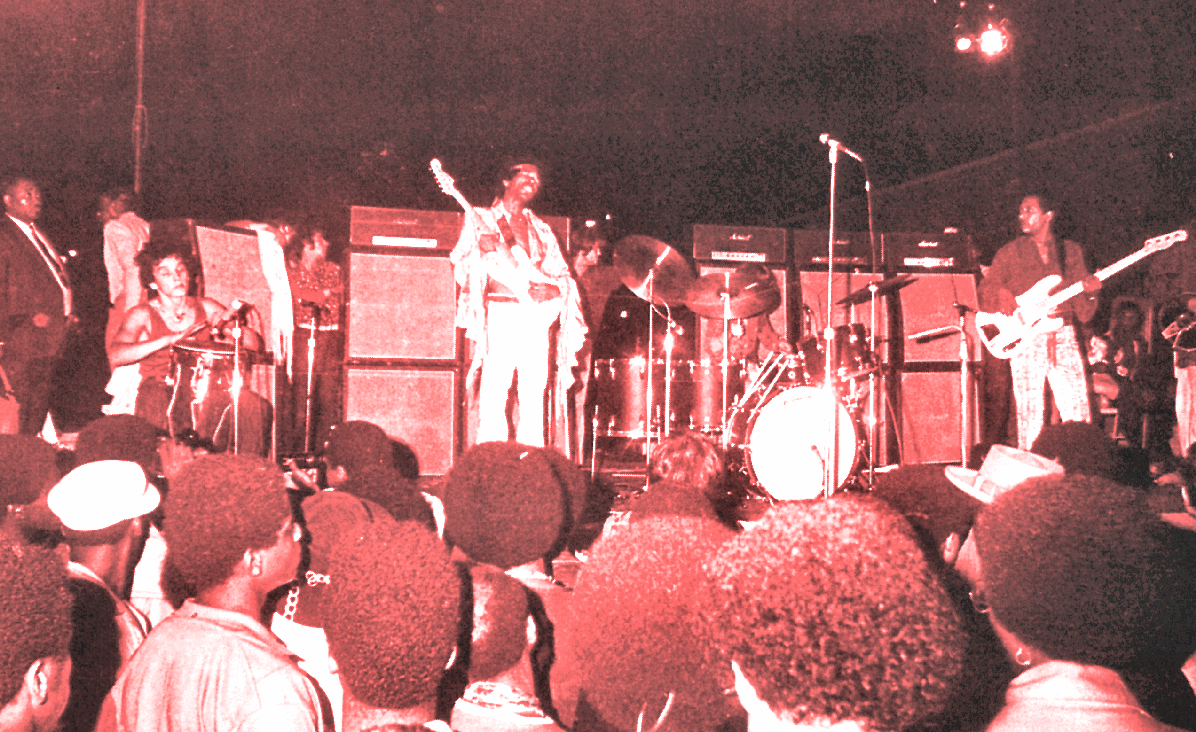 Jimi, Mitch & Billy in Harlem, Sept. 5, 1969 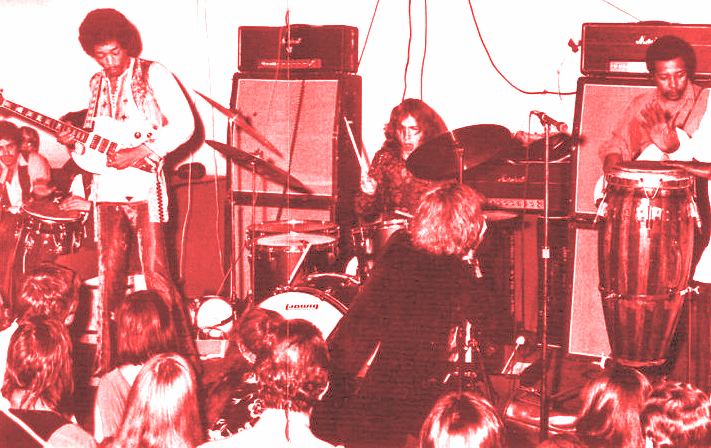 Jimi, Mitch & Billy at Salvation, Sept. 10, 1969 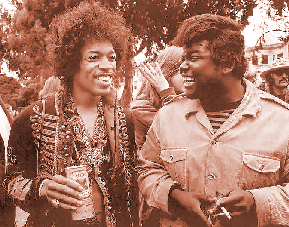 Jimi & Buddy in the Hashbury, Summer of Love, June 25, 1967 |
| © 1990 First Century Press. All Rights Reserved. Contact Us |
